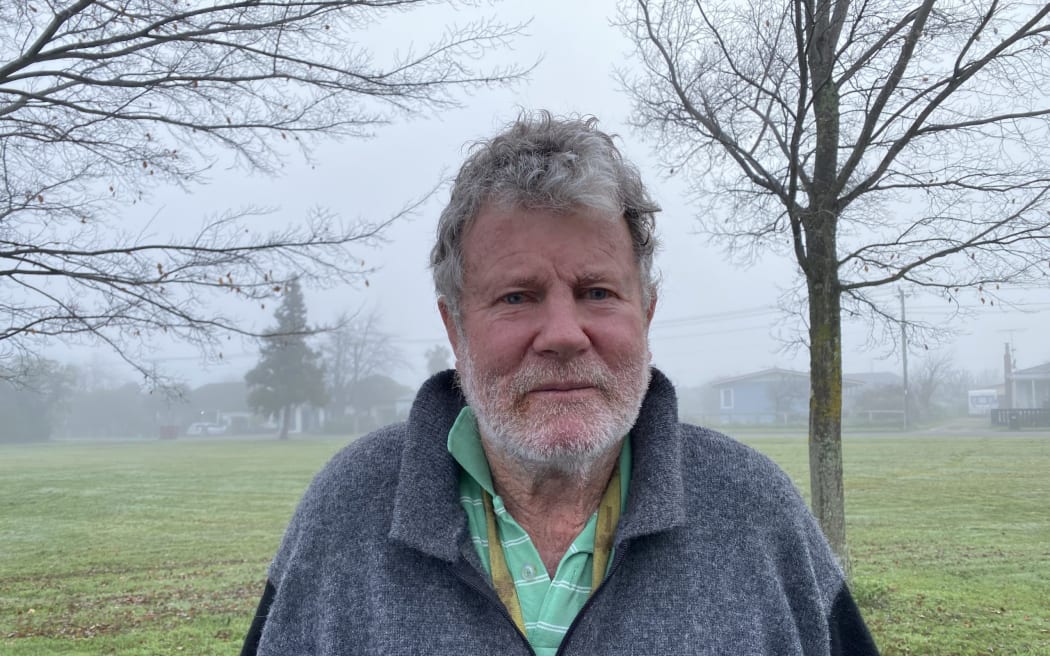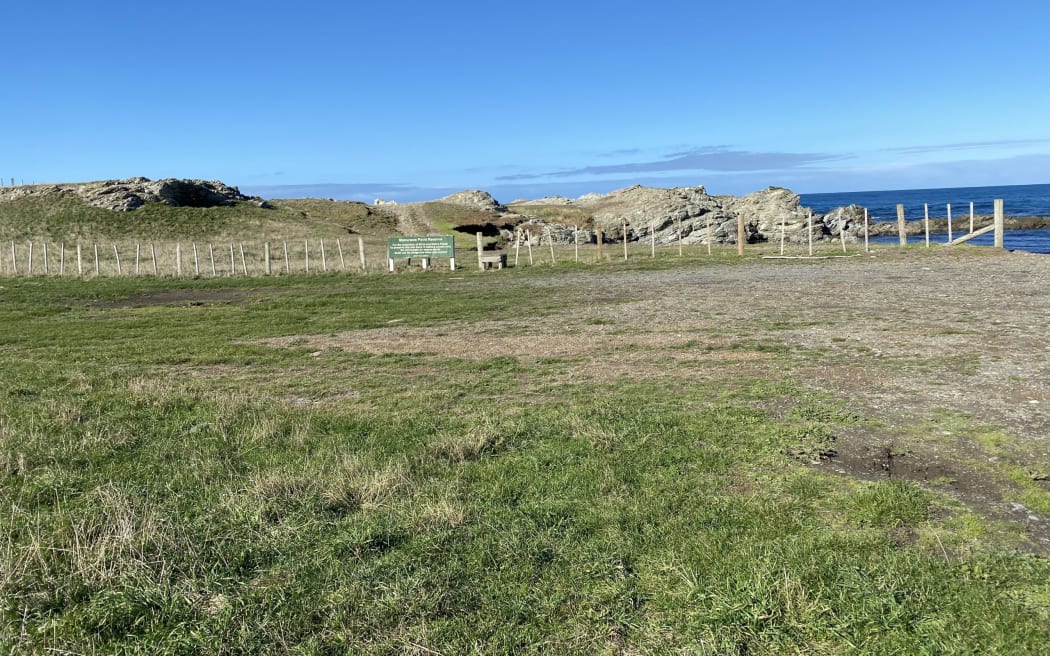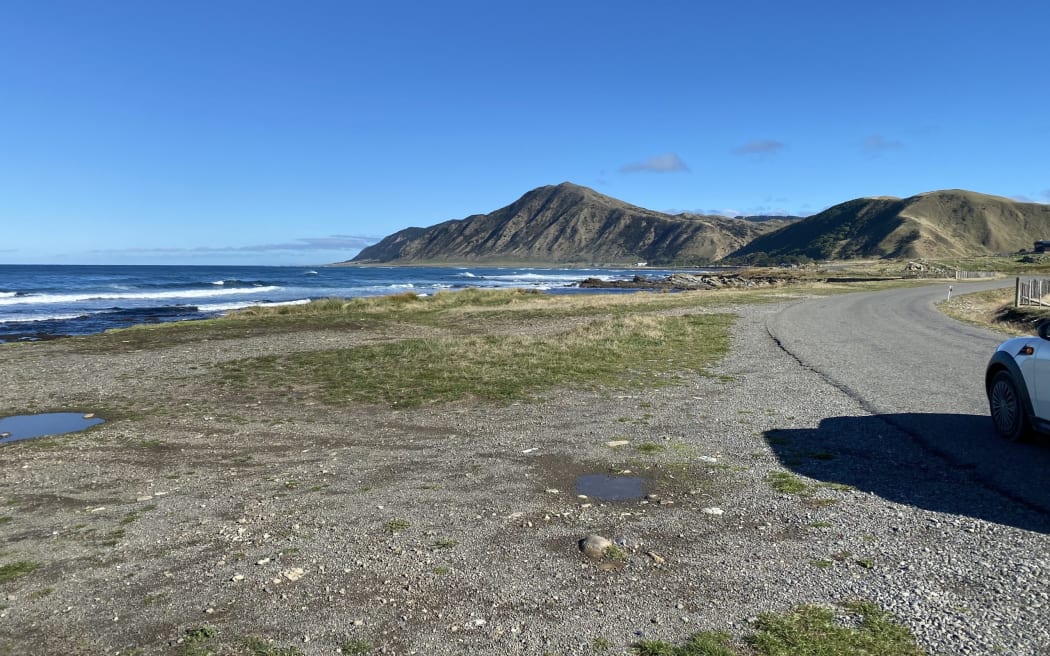
South Wairarapa farmer Jim Hedley says his rates have increased to more than $58,000 this year. Photo: LDR / Sue Teodoro
South Wairarapa farmers are frustrated and angry at the amount of rates they are paying, with one currently withholding rates payments in protest.
Local farmers said the system was unfair and did not deliver value for money. South Wairarapa District Council (SWDC) said they were arranging a rating review, but the farmers said the sector was overburdened right now.
One said recent SWDC rates hikes would force some farmers off the land.
The comments come as SWDC raised rates on average by 19.8 percent. South Wairarapa ratepayers are also liable to pay Greater Wellington Regional Council (GWRC) rates, which have gone up 16.9 percent.

The combined rates liability of two South Wairarapa farmers for the 2024 financial year is well over $100,000, but they say they are paying for things they either don't get or don't use.
Jim Hedley has a dairy and beef farm near Featherston. His rates this year have gone up to more than $58,000. Dan Riddiford farms on a station on South Wairarapa's south coast. Last year his rates liability was more than $45,000. While Riddiford has not yet got this year's bill, he expects a substantial increase.
"We are being fleeced," Hedley said.
"Farmers are not getting much for their money."
Hedley said the rates model was skewed in favour of urban ratepayers.
"Everything is against us for the benefit of urban," he said.
"We are not connected to the water supply. We have to supply and pay for our own water services."
"The GWRC transport rate is flawed. Busses and trains are at the back door of Wellington ratepayers. Rural ratepayers get a lot less service than urban. The farmer is paying more than an urban ratepayer in Wellington getting all the service."
"Council threw rural ratepayers under the bus to keep urban rates low."
Hedley pointed to the SWDC split vote on rates this year.
"All bar three councillors voted to approve the SWDC annual plan."
Councillors Aidan Ellims, Pip Maynard and Aaron Woodcock had voted against adopting the annual plan and 19.8 percent rates hike.

Dan Riddiford's Te Awaiti station. Photo: LDR / Sue Teodoro
Riddiford is the fifth-generation owner of Te Awaiti station in South Wairarapa.
He said while he was liable for tens of thousands of dollars in rates every year, he got almost nothing in return. He is now refusing to pay rates he said were unfairly charged, and did not comply with current legislative requirements.
"I continue to withhold rates as a political protest to compel the SWDC to comply with the law and become efficient," he said.
"Irresponsible council rate increases will force farming families off the land since they follow 16 percent cost inflation imposed by central government and a 35 percent drop in sheep returns. Recent increases in SWDC salaries and staff will be funded by rural depopulation."
One of the major benefits for Riddiford and others in his area is roading, but locals say the roads are poorly maintained, fragile and sometimes impassable.
Rural ratepayers do not use town water supplies, and district mayor, Martin Connelly has previously pointed out they are not charged for those and other services they do not use.
Riddiford accepted much of the current situation was historic.
"I am sorry for mayor Connelly and council for the mess they have inherited. However that is no excuse for delay. Unless there is an immediate independent first principles rates review immediately implemented the recent unfair increase in rural rates will at law [s101 Local Government Act 2002] remain uncollectable and unenforceable. Justice delayed is justice denied," he said.
SWDC interim chief executive Paul Gardner confirmed the rating review was already underway.
"The rating review commenced in September 2022 and councillors have already had several workshops on the topic," he said.
He said consultation for the review was provisionally set for September this year, to be done in conjunction with the 2024-34 Long-term Plan [LTP] process.
"The rating review commenced in September 2022 so that it could be concluded prior to the 2024-34 LTP, which needs to be adopted by 30 June 2024, Gardner said.
He said after the public consultation process, a recommendation would be put to councillors for the rating model to be adopted later this year.
Gardner expected the review to be finished before the next rates were set in 2024.
Documentation relation to a previous review in 2018 was not available.
"A full review was not done at that time so there are no decisions records on file. The existing rating model continued. The full review is being done this year," Gardner said.

The coastal road near Dan Riddiford's Te Awaiti station. Photo: RNZ / Sue Teodoro
Hedley has conducted an almost forensic examination of the current system.
He said costs for animal control were charged to rural ratepayers, but much of the revenue raised was spent on dog control - a mostly urban problem.
"Dog control and dog attacks have an urban focus. Animal control relating to stock issues have few instances by comparison. If the money for dog control was done properly the fees would be charged to the dog registration fee," he said, estimating that to be about $70 extra per dog.
"They [SWDC] are waiting for the rating review. In the meantime they are taking money off the farmers incorrectly."
Hedley said urban footpaths and roading were other examples of an unfair burden on rural dwellers.
"The rural road reserve [funded only by rural ratepayers] is $300,000 - on top of the 70 percent rural pay for land transport - even though the roads are a network used by both urban and rural. Rural still pay 70 percent of urban roads," he said.
He pointed out governance costs were split 25 percent urban and 75 percent rural even though the land value split was about 30 percent urban and 70 percent rural.
"The councillors that voted for this only wanted to keep urban rates low at the expense of rural ratepayers. They rely on the flawed rating model and also the rating review which is to take place later this year, that is too late as the damage is done," Hedley said.
SWDC mayor Martin Connelly has previously explained rural rates in South Wairarapa were based on land values.
"No ratepayer is charged according to the size of their land. They are charged according to the value of the land they own," he said.
Additional rates were added depending whether the property was urban or rural.
Connelly said earlier this year typical rural rates were based on land value, a uniform general charge [rural], and a rural reserves and amenities component.
"Rural residents do not use rubbish collection services, wastewater disposal services, and urban water supplies, and they do not get charged for them either," Connelly said.
"Council uses rates just as central government uses taxes. Councils have few other ways of raising the money we need to supply the services residents expect.
"Just as the Inland Revenue tax system taxes people on a higher income at a higher rate to those who earn less, councils use the value of a property as a guide to people's ability to pay.
"It is a rough and ready measure of the ability to pay, but no one has come up with a fairer system."
Connelly said SWDC wanted to have fair rates and the review would test the fairness of the current system.
"For every ratepayer who is urging us to reduce their rates, there is another seeking greater council expenditure. This council aims to balance those competing interests."
Local Democracy Reporting is Public Interest Journalism funded through NZ On Air

